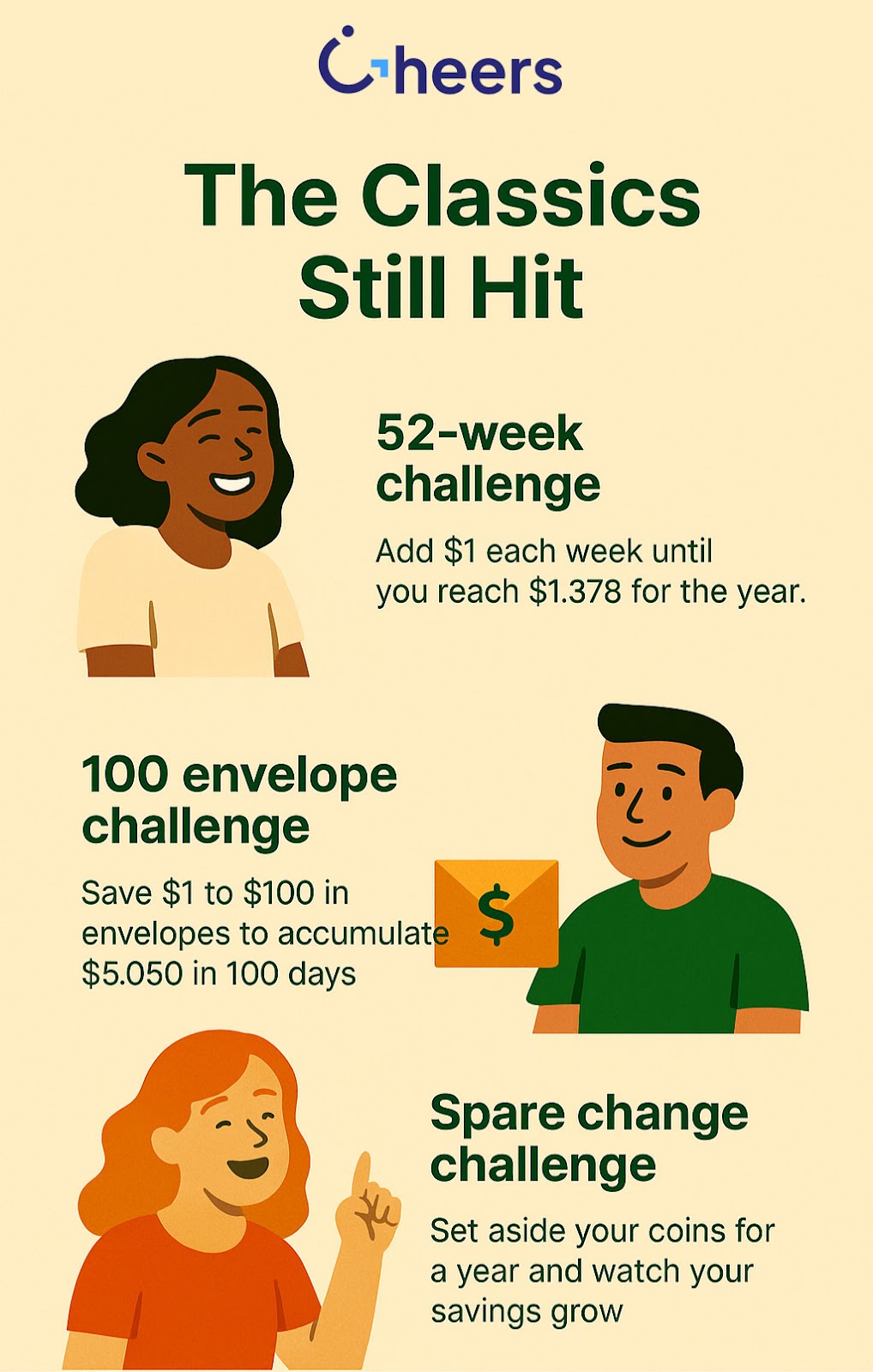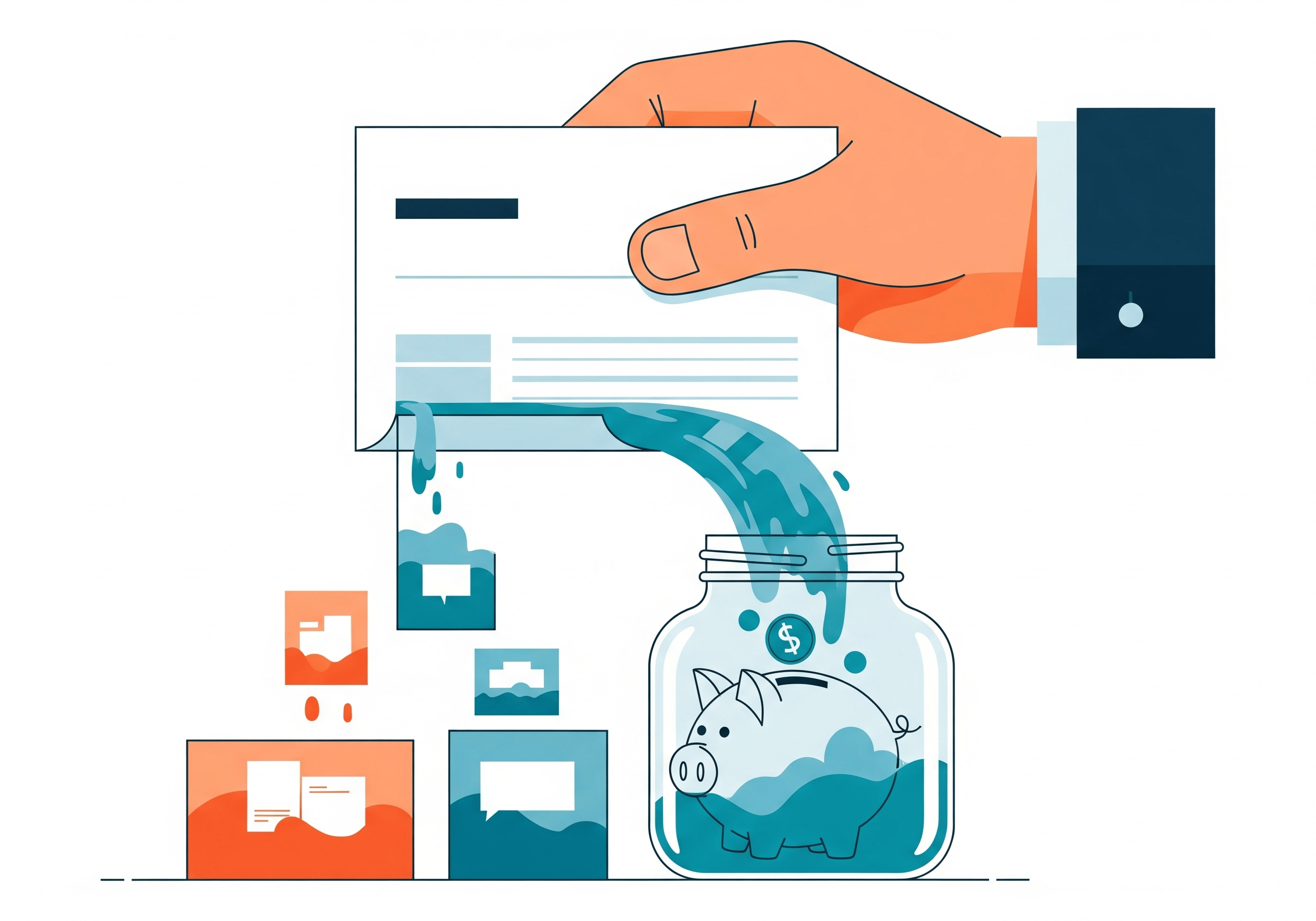Savings challenges have been brought to attention as a way to build consistency without strict budgeting or extreme sacrifices. Whether it's the classic 52-week Challenge or newer trends like soft saving, revenge saving, or gamified daily saving, these methods give you a practical way to stay on track financially while still living your life. They work for small incomes and busy schedules, and they're easier to stick with when you automate, track your progress visually, and tie your efforts to a goal. Some even go a step further by helping you build credit as you save. This article breaks down which challenges are worth trying in 2025, how to make them stick, and how to take your savings further with options like Cheers Credit Builder.
You Want Progress Without Burnout
There's been a significant shift in mindset. People want financial stability, but they don't want to sacrifice every bit of joy along the way. "Soft saving" is emerging as the answer-it encourages intentional spending and steady saving without guilt or burnout.
Savings challenges provide a structured approach to getting started. You choose a goal, stick with a process, and track your wins. The beauty of this method is that it doesn't require a big salary or intense self-discipline. It's about creating forward momentum with whatever you have.
Why Savings Challenges Work (Even When Budgets Don't)
Budgeting has its place, but for many, it feels heavy and hard to follow. There are spreadsheets, categories, and the constant need to adjust. Savings challenges simplify the entire process. You focus on one goal with a clear strategy. Whether you're saving $1 a day or $100 a month, the system takes the mental load off your plate.
They're also designed to create quick wins. You see your balance go up. You hit milestones. That progress builds confidence, which makes it easier to stick with.
The Classics Still Hit
Some savings challenges have been around for years, and there's a reason they continue to appear in financial advice. They're simple, scalable, and they work.
The 52-Week Challenge is one of the most popular weight loss challenges. You start by saving $1 in the first week, $2 in the second, and so on. By the end of the year, you'll have saved $1,378.
The 100 Envelope Challenge takes a more randomized approach. You label 100 envelopes with the numbers 1 to 100, then draw one at random and add that dollar amount to your savings. Complete the full set and you've saved over $5,000.
The $5 Weekly Bump is another crowd favorite. Start with $5 in week one, and increase your deposit by $5 every week. That gets you close to $7,000 in a year.
Then there are flexible challenges, such as the No-Spend Challenge, where you pick a timeframe—maybe one day a week or one weekend a month—to pause non-essential spending and redirect those funds. Or the Spare Change Challenge, where you round up purchases and save the difference, sometimes with the help of apps.

What's New for 2025: Saving on Your Terms
Savings challenges add even more flexibility. You can match daily savings to the temperature outside or roll the dice to determine how much to set aside. These methods make saving feel more like a game and less like a chore.
Revenge saving is also trending. After a few years of overspending or feeling financially out of control, many people are embracing a reset. They're cutting back- not to punish themselves, but to take control and prepare for what's next.
There's also a strong focus on pairing savings with side hustles. People are taking extra income from freelance gigs, weekend work, or passion projects and setting aside a chunk for future goals. Some are automating those transfers so the saving happens before the money has a chance to be spent.
Make It Stick
The most effective savings challenge is the one you'll follow through with. Start small and keep it consistent. Automating your transfers can help remove the friction-just set a schedule with your bank or app so the money moves without needing your attention.
Tracking your progress is a powerful motivator. That could mean coloring in a printable chart, labeling envelopes, or using an app that tracks your progress and growth. Visual reminders help make the habit real.
Setting a goal gives your effort a direction. Saving to save is tough. But saving for something specific, like an emergency fund, debt payoff, or a future trip, keeps your energy up.
And don't forget to celebrate milestones. Whether you save $100 or $1,000, take a moment to enjoy that win. Reinforcing progress makes the next step easier.
What If You Want to Save and Build Credit?
Here's where you can level up. Some savings challenges only grow your cash. Others, like the Cheers Credit Builder, also help you grow your credit history.
Here's how it works: You choose a monthly amount to pay, and Cheers places your payments in a secure, FDIC-insured account. Each month, your payment is reported to all three credit bureaus, building a positive history while your savings accumulate. At the end of your term, you get your payments back (minus interest). There are no fees, setup costs, or credit checks to get started.
It's a savings challenge with added credit benefits, which can be invaluable if you're new to credit or rebuilding after a rough patch.
Your Next Step
Savings challenges aren't just trendy- they're helpful. They give structure to your savings without killing your lifestyle. You don't need to wait for a perfect time or perfect budget. You can start with a few dollars and build from there. Whether you're saving $5 a week or launching a side hustle, we're here to help you stay consistent, build your credit, and keep moving forward.
Cheers is not a bank — deposit account held by Sunrise Bank, Member FDIC.


















